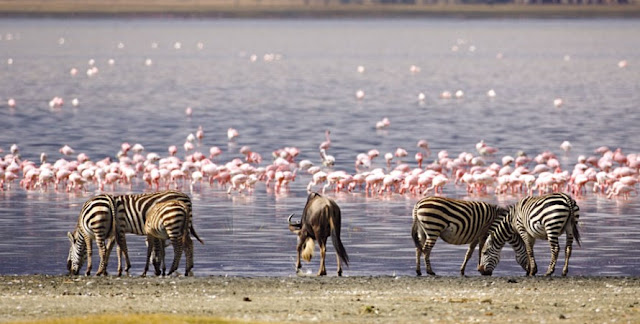Lake Nakuru National Park encompasses the alkaline lake of the same name and is frequently visited by hundreds of thousands (sometimes more than a million) of greater and lesser flamingos, providing an amazing bird spectacle. More than 400 bird species in all have been recorded. Located 100 miles (160 km) northwest of Nairobi on a fair road, the park covers 73-square-miles (188-km2) — most of which is the lake itself. Nakuru has been declared a black rhino sanctuary and has a fair number of these endangered animals.
A small population of white rhinos has been reintroduced from South Africa. Other wildlife includes lion, leopard, Rothschild’s giraffe (introduced), waterbuck, reedbuck, hippo, baboon, pelican, and cormorant. The lake is an important stopover for thousands of migratory wading birds that head to and from Europe each year. Lake Bogoria National Reserve, located north of Nakuru, has numerous hot springs and geysers along the lakeshore.
Thousands of flamingos frequent this alkaline lake, as do greater kudu on the steep slopes of the lake’s eastern and southern shores. Lake Baringo, a freshwater lake located 20 miles (32 km) north of Lake Bogoria, is a haven for a colorful and mixed variety of birdlife (over 400 species recorded). There is a sporting center for waterskiing, fishing, and boating — beware of the hippos and crocodiles!




















































